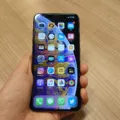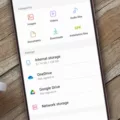Are you experiencing scrolling issues on your Android phone? You’re not alone. Many users face this frustrating problem where the screen doesn’t scroll smoothly or scrolls automatically without their input. But don’t worry, there are solutions to fix this issue. In this article, we’ll explore the possible causes and provide you with effective troubleshooting steps.
1. Update your software:
One of the common reasons for scrolling problems is outdated software. Manufacturers regularly release software updates to fix bugs and improve performance. To check for updates on your Android phone, go to Settings > System > System update. If an update is available, download and install it to see if it resolves the scrolling problem.
2. Clean your screen:
Sometimes, the scrolling issue could be due to dirt or smudges on your touchscreen. Clean your screen using a microfiber cloth or screen cleaning solution. Ensure that there are no obstructions on the screen that could interfere with touch input.
3. Restart your phone:
A simple restart can often solve minor software glitches that cause scrolling problems. Press and hold the power button on your Android phone, and then tap on the “Restart” option. Once your phone restarts, check if the scrolling problem persists.
4. Clear cache and data:
Cache and data buildup can impact your phone’s performance, including scrolling. To clear your cache, go to Settings > Storage > Cached data, and tap on “Clear cached data.” Additionally, you can clear app data by going to Settings > Apps > [App Name] > Storage > Clear data. Note that clearing app data will reset the app to its default settings, so proceed with caution.
5. Check for rogue apps:
Certain third-party apps can cause scrolling issues on your Android phone. To identify if an app is the culprit, boot your phone into Safe Mode. To do this, press and hold the power button, then tap and hold the “Power off” option until you see the Safe Mode prompt. In Safe Mode, only pre-installed system apps will be active. If the scrolling problem disappears in Safe Mode, it’s likely caused by a third-party app. Uninstall recently installed apps one by one to pinpoint the problematic app.
6. Factory reset:
If all else fails, you can try performing a factory reset on your Android phone. This will erase all data on your device, so make sure to back up your important files before proceeding. To factory reset your phone, go to Settings > System > Reset options > Erase all data (factory reset). After the reset, set up your device as new and check if the scrolling problem is resolved.
By following these steps, you should be able to troubleshoot and fix the scrolling problem on your Android phone. Remember to regularly update your software and keep your device clean to avoid similar issues in the future.

How Do You Change Scroll Settings on Android?
To change the scroll settings on your Android device, please follow these steps:
1. Swipe down from the top of your home screen to access the notification panel.
2. Tap on the gear-shaped settings icon to open the Settings menu.
3. Scroll down the settings menu and locate the option labeled “General Management.” Tap on it to proceed.
4. Within the General Management menu, scroll down until you find the “Language and Input” option. Tap on it.
5. In the Language and Input menu, you may need to scroll down again to find the “Keyboard and Input Methods” section. Tap on it.
6. Look for the virtual keyboard or input method that you are currently using (e.g., Gboard, Samsung Keyboard, etc.) and tap on it.
7. Within the keyboard settings, you should find an option named “Preferences” or “Advanced.” Tap on it to access more options.
8. Depending on your device and keyboard, you may see different settings related to scrolling. Look for an option that mentions “Scrolling” or “Scrolling Speed.”
9. Tap on the scrolling option to open its settings. Here, you can adjust the scrolling speed by sliding a bar or using a numerical value.
10. Experiment with different scroll speed settings until you find the one that suits you best.
11. Once you’re satisfied with the changes, exit the settings menu by pressing the back button or using the navigation gestures provided by your device.
Why is Your Phone Screen Jumping When Scrolling?
There are several possible reasons why your phone screen may be jumping when scrolling. Here are some potential causes:
1. Software glitch: A software glitch or bug could be causing the screen to jump. This could be due to an outdated or incompatible app, a corrupt system file, or a problem with the operating system itself.
2. Insufficient system resources: If your device is low on memory or processing power, it may struggle to smoothly render and display content while scrolling, leading to a jumpy screen.
3. Touchscreen sensitivity: Sometimes, the touchscreen sensitivity settings on your device may be too high or too low, causing the screen to respond erratically when you scroll.
4. Display refresh rate: The refresh rate of your device’s display could affect how smoothly it renders scrolling content. If the refresh rate is low, it may result in a choppy or jumpy scrolling experience.
5. Hardware issues: In some cases, a hardware problem, such as a faulty touchscreen or a loose connection, could be causing the screen to jump when scrolling.
To troubleshoot and resolve the issue, you can try the following steps:
1. Restart your device: A simple restart can often fix minor software glitches and refresh the system.
2. Check for software updates: Make sure your device’s software is up to date, as software updates often include bug fixes and performance improvements.
3. Clear app cache: Clearing the cache of specific apps can help resolve issues related to app performance. Go to Settings > Apps > [App Name] > Storage > Clear cache.
4. Adjust touchscreen sensitivity: If your device allows it, try adjusting the touchscreen sensitivity settings to see if it improves the scrolling experience.
5. Reduce background processes: Close unnecessary apps running in the background to free up system resources and improve overall performance.
6. Factory reset: If all else fails, you can try performing a factory reset on your device. This will erase all data and settings, so be sure to back up your important files before proceeding. A factory reset can help resolve persistent software issues, but it should be considered as a last resort.
If the problem persists after trying these steps, it may be a hardware issue, and you should consider contacting the manufacturer or taking your device to a professional for further assistance.
Conclusion
The scrolling problem on Android phones can be quite frustrating, as it hinders the smooth navigation and usability of the device. This issue can be caused by a variety of factors, including software glitches, outdated software versions, or even hardware-related issues.
To address the problem, it is recommended to start by checking for any available software updates. Updating the device’s software can often resolve software-related issues that may be causing the scrolling problem.
If the issue persists, it is important to examine the physical components of the device. Ensure that the mouse wheel or trackpad is not clogged with dirt or dust, as this can impede its functionality. Additionally, if you are using a touchscreen monitor or laptop, make sure it is clean, as any dirt or smudges can interfere with the touch sensitivity.
In some cases, disconnecting and reconnecting the mouse or trackpad to a different USB port can also help determine if the problem lies with the port itself. Sometimes, simply changing the port can resolve any connectivity issues causing the scrolling problem.
Troubleshooting the scrolling problem on Android phones requires a systematic approach, starting with software updates and then moving on to examining the physical components. By following these steps, you should be able to identify and resolve the issue, restoring smooth scrolling functionality to your Android device.








